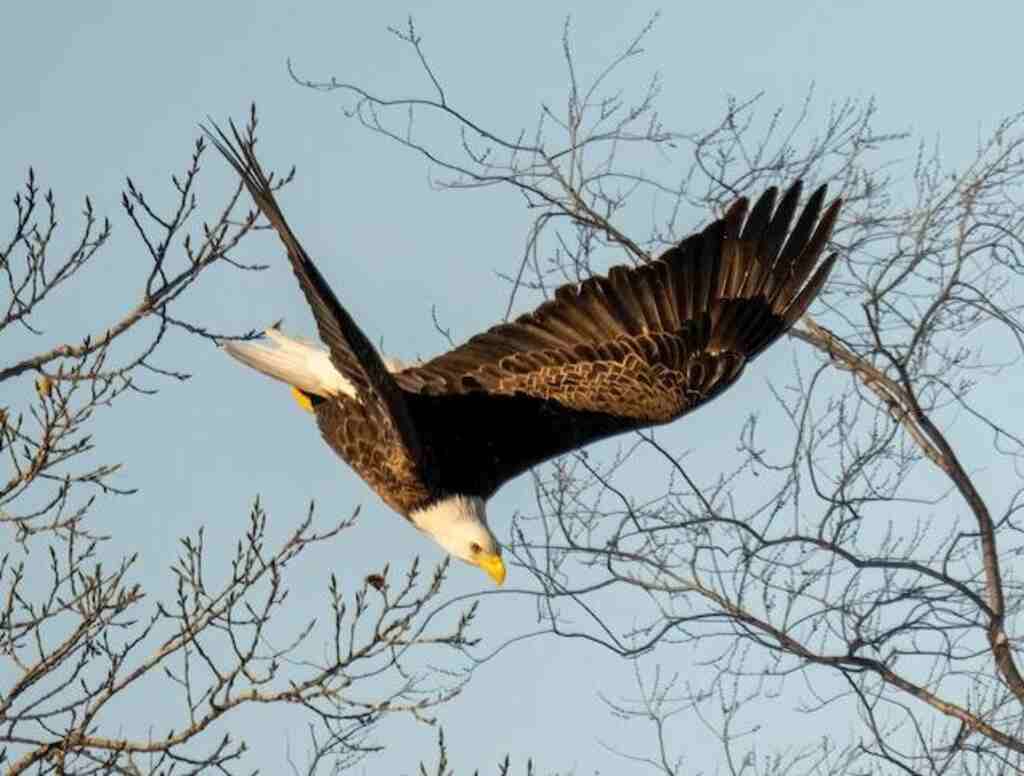Do Eagles Eat Bats? That’s the burning question taking flight in the curious minds of nature enthusiasts everywhere.
Eagles, the majestic rulers of the skies, have long captivated scientists and nature lovers with their hunting prowess and vital role in ecosystems.
In this feathery adventure, we’ll uncover the truth behind whether these powerful birds include bats in their diet.
Join us as we explore eagle hunting techniques, examine bat behavior, and unveil the captivating world of eagle-bat interactions.
The short answer awaits, but there’s more to discover in this soaring quest!
Table of Contents
- 1 Eagle Hunting Techniques
- 2 The Diet of Eagles
- 3 The Nocturnal Habits of Bats
- 4 Do Eagles Eat Bats?
- 5 Potential Reasons for Eagle-Bat Interactions
- 6 The Impact of Eagle-Bat Interactions on Ecosystems
- 7 Research and Observations on Eagle-Bat Interactions
- 8 Conservation and Protection of Bats
- 9 Fascinating Facts about Eagles and Bats
- 10 Frequently Asked Questions
- 10.1 How do eagles catch bats in mid-air?
- 10.2 Are bats a significant part of an eagle’s diet?
- 10.3 Do bats have any defense mechanisms against eagle attacks?
- 10.4 Are there any specific bat species that are more commonly targeted by eagles?
- 10.5 How do eagle-bat interactions affect the population size of bats in a given ecosystem?
- 11 Conclusion
- 12 Author
Eagle Hunting Techniques
Eagles employ a diverse range of hunting techniques, demonstrating their adaptability and strategic prowess in capturing prey, such as bats.
These majestic birds have evolved various strategies to effectively hunt bats, which include aerial pursuits, ambushes, and cooperative hunting.
When it comes to aerial pursuits, eagles use their exceptional eyesight to spot bats flying at night and then chase them down in the air.
They employ their powerful wings and sharp talons to maneuver swiftly and capture their prey mid-flight.
In ambush hunting, eagles strategically position themselves in trees or high perches, patiently waiting for bats to fly by.
Once a bat is within striking distance, the eagle swiftly swoops down and snatches it with precision.
Additionally, some eagle species engage in cooperative hunting, where multiple eagles work together to encircle and trap a group of bats.
This strategic collaboration allows them to increase their chances of success in capturing multiple prey at once.
These eagle hunting strategies reveal their ability to adapt and exploit different hunting scenarios, showcasing their remarkable hunting skills and versatility.
As we delve into the diet of eagles, it becomes evident how their hunting techniques intertwine with their feeding habits, shedding light on the coexistence between eagles and bats.
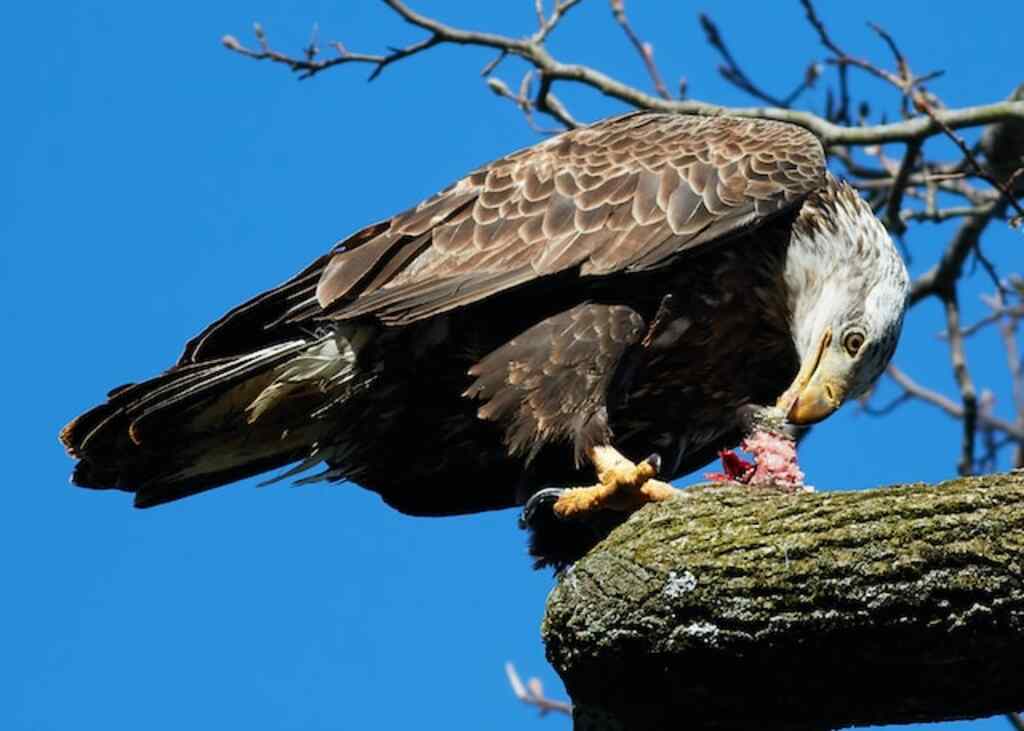
The Diet of Eagles
Avian predators such as eagles have a diverse range of dietary preferences. When it comes to eagle feeding habits, their prey selection varies depending on the species and their ecological niche.
While some eagles primarily hunt fish, others are known to prey on small mammals, birds, reptiles, and even carrion. To illustrate the variety of prey that eagles consume, consider the following table:
| Prey Type | Examples |
|---|---|
| Fish | Salmon, trout, catfish |
| Mammals | Squirrels, rabbits, rodents |
| Birds | Ducks, pigeons, seagulls |
This table demonstrates the wide range of prey that eagles are capable of capturing and consuming.
It is important to note that the diet of eagles can also be influenced by factors such as habitat availability and seasonal variations.
Understanding the eagle’s diverse diet helps us appreciate their role as top predators in their ecosystems.
As we delve into the topic of the nocturnal habits of bats, we will explore another fascinating aspect of the avian and mammalian interactions in the natural world.
The Nocturnal Habits of Bats
Bats, being creatures of the night, have developed fascinating habits and adaptations to thrive in their nocturnal environment.
Nocturnal behavior is a key characteristic of bats, as they are most active during the darkness of night.
They have evolved to navigate and hunt in the absence of light, relying on their exceptional echolocation abilities to locate prey and avoid obstacles.
Bats are known to inhabit a variety of habitats, including caves, trees, and even man-made structures like buildings and bridges.
These habitats provide them with the necessary shelter and protection during the day when they rest.
Bats have also adapted to roost in large colonies, which not only provides them with safety in numbers but also enables them to share information about food sources and potential threats.
Their nocturnal habits and unique adaptations have allowed bats to successfully occupy diverse ecosystems around the world.
Transitioning into the subsequent section about ‘do eagles hunt bats?’, it is intriguing to explore how these two fascinating creatures intersect in the realm of predation.
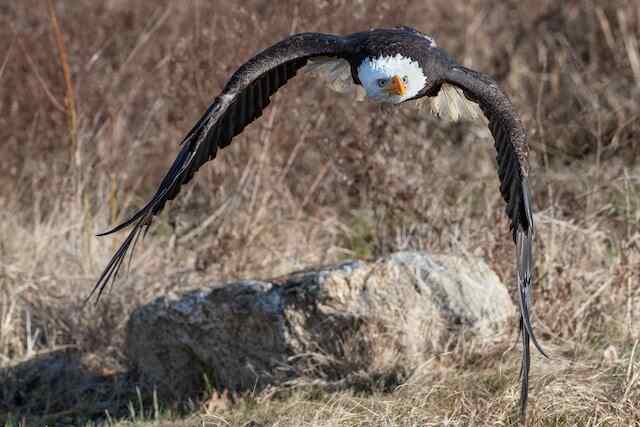
Do Eagles Eat Bats?
Predatory interactions between certain avian species and nocturnal creatures have long intrigued scientists and nature enthusiasts alike.
When considering the eagle bat behavior, it is important to understand the predator-prey dynamics at play.
While eagles are known for their impressive hunting skills and ability to capture a wide range of prey, bats are not typically a primary food source for them.
However, there have been documented cases of eagles hunting and consuming bats. These interactions are relatively rare and occur under specific circumstances.
To help the audience enjoy what is written, here are five key points to consider:
- Eagles may hunt bats when other food sources are scarce or unavailable.
- Bats are agile and maneuverable flyers, making them a challenging target for eagles.
- Eagles may target bats that are weakened, injured, or flying close to the ground.
- Bats have evolved various defensive mechanisms, such as echolocation and flying in large groups, to minimize the risk of predation.
- The frequency of eagle-bat interactions may vary depending on factors such as habitat, prey availability, and eagle species.
Understanding the nuances of eagle-bat interactions can shed light on the intricate dynamics of predator-prey relationships in the natural world.
These interactions may be influenced by factors such as the availability of alternative prey, the vulnerability of bats, and the hunting strategies employed by eagles.
Transitioning into the subsequent section about potential reasons for eagle-bat interactions, it is important to explore the various ecological and evolutionary factors that may contribute to these encounters.
Potential Reasons for Eagle-Bat Interactions
One possible reason for the interactions between eagles and bats could be the scarcity of alternative prey options.
Eagles are known to be opportunistic predators, and if their preferred prey species are limited in availability, they may resort to hunting bats.
Bats are nocturnal creatures that are highly maneuverable in flight, making them a challenging target for predators.
However, eagles possess exceptional vision and aerial skills, allowing them to effectively hunt bats.
Additionally, bats may congregate in large numbers during certain periods, such as when they migrate or hibernate, presenting an attractive food source for eagles.
The ecological implications of eagle-bat predation are not well understood, but it is possible that the interactions could have effects on bat populations, as well as on the ecosystems in which they play important roles as pollinators and insect control agents.
Understanding the impact of eagle-bat interactions on ecosystems is crucial for maintaining the balance of these natural communities and ensuring their long-term stability.
Transitioning into the subsequent section about the impact of eagle-bat interactions on ecosystems, it is important to consider the potential consequences of these interactions on the dynamics of bat populations and the broader ecological implications.
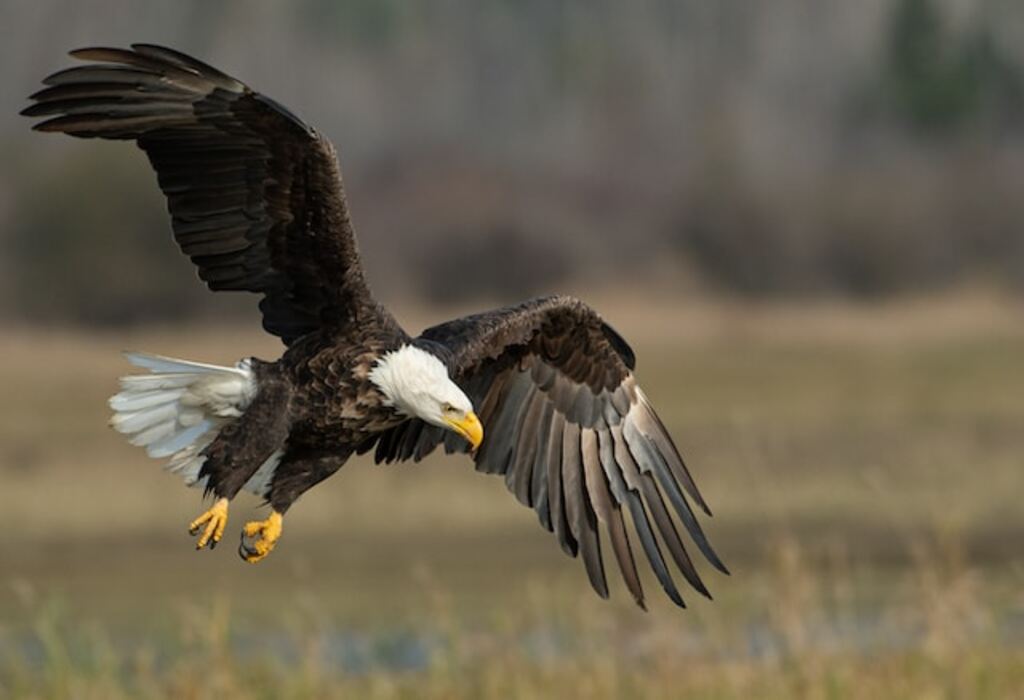
The Impact of Eagle-Bat Interactions on Ecosystems
The ecological repercussions of the interactions between eagles and bats extend beyond the immediate predator-prey relationship, potentially impacting the delicate balance of ecosystems and the vital services provided by bats as pollinators and insect control agents.
Understanding the dynamics of eagle-bat populations and the ecological implications of eagle predation on bats is crucial.
Bats play a critical role in pollination, helping to maintain the diversity and abundance of plant species.
Additionally, bats are efficient insect predators, helping to control insect populations and reduce the need for chemical pesticides.
Therefore, the loss of bats due to eagle predation can have far-reaching effects on ecosystem functioning.
It is essential to further investigate and understand the impacts of eagle-bat interactions to inform conservation efforts and maintain the ecological balance.
Transitioning to the subsequent section about ‘research and observations on eagle-bat interactions,’ future studies will shed light on the mechanisms driving these interactions and their implications for both eagle and bat populations.
Research and Observations on Eagle-Bat Interactions
Research and observations on the interactions between eagles and bats have provided valuable insights into the dynamics of these relationships and their potential ecological implications.
Eagle bat coexistence is a complex phenomenon that involves predator-prey dynamics and impacts the overall balance of ecosystems.
Studies have shown that eagles are opportunistic predators, and bats are often part of their diet. This has led to a better understanding of how eagles shape bat populations and influence their behavior.
For example, eagles are known to hunt bats during their nighttime foraging flights, which can result in changes in bat activity patterns and roosting behavior.
Additionally, research has highlighted the importance of bat colonies as a food source for eagles, particularly during the breeding season when they require high energy intake.
These observations have shed light on the interconnectedness of these two species and the potential consequences of disturbances in their interactions.
Moving forward, understanding and conserving the delicate balance between eagles and bats is crucial for the protection of bat populations and the overall health of ecosystems.
Conservation and Protection of Bats
Conservation efforts aimed at protecting bat populations are essential for maintaining the ecological balance within ecosystems.
Bats play a crucial role in pollination and seed dispersal, making them key contributors to the overall health and diversity of plant communities.
Additionally, bats are natural pest controllers, consuming large quantities of insects, including those that are considered agricultural pests.
Benefits of bat conservation:
- Bats provide invaluable ecosystem services, such as pollination and seed dispersal, which are essential for the reproduction and survival of many plant species.
- Bats contribute to pest control by consuming vast numbers of insects, reducing the need for chemical pesticides and benefiting both agricultural and natural landscapes.
Challenges in bat conservation:
- Bats face numerous threats, including habitat loss, climate change, pesticide exposure, and the spread of diseases like white-nose syndrome.
- Conservation efforts must focus on preserving and restoring bat habitats, implementing measures to reduce pesticide use, and raising awareness about the importance of bat conservation.
By understanding the significance of bat conservation and the challenges they face, we can better appreciate the interconnectedness of ecosystems and the need to protect these fascinating creatures.
Transitioning into the subsequent section about ‘fascinating facts about eagles and bats’, it is important to highlight the diverse interactions between these two species without explicitly using the term ‘step’.

Fascinating Facts about Eagles and Bats
Fascinatingly, eagles and bats exhibit intricate ecological interactions that contribute to the balance and biodiversity of ecosystems.
These interactions have significant ecological implications and highlight the interconnectedness of species within their habitats.
Eagles, known for their aerial prowess and keen eyesight, are opportunistic predators that primarily feed on small mammals, birds, and fish.
While bats may not be a primary food source for eagles, there have been documented cases of eagles preying on bats.
This interaction can have direct and indirect effects on both species and the wider ecosystem.
The table below provides a comparison of some key characteristics and behaviors of eagles and bats, showcasing their distinct adaptations and roles in the ecosystem.
| Eagles | Bats | |
|---|---|---|
| Physical Characteristics | Large, powerful birds of prey with sharp talons and strong beaks | Small, nocturnal mammals with leathery wings and specialized adaptations for flight |
| Hunting Strategies | Use their exceptional eyesight to spot and pursue prey from the air | Utilize echolocation to navigate, detect prey, and capture insects mid-flight |
| Diet | Predominantly carnivorous, feeding on small mammals, birds, and fish | Varies depending on species, with some bats consuming insects, fruits, nectar, or even small vertebrates |
| Ecological Role | Top predators that help regulate populations of prey species | Important pollinators and seed dispersers, contributing to the health and diversity of ecosystems |
| Conservation Status | Varies depending on species, with some facing threats such as habitat loss and illegal hunting | Many bat species are threatened due to habitat destruction, disease, and negative perceptions |
These eagle-bat interactions highlight the complexity of ecological relationships and the importance of maintaining healthy ecosystems.
While eagles may occasionally prey on bats, it is crucial to recognize the role that bats play in pollination, seed dispersal, and insect control.
Conservation efforts should focus on protecting and preserving the habitats of both eagles and bats to ensure the continued balance and biodiversity of ecosystems.
Frequently Asked Questions
How do eagles catch bats in mid-air?
Eagles catch bats in mid-air using their exceptional vision and agility. They employ various hunting techniques, such as diving from the sky or ambushing from perches. Bats try to evade by erratic flight patterns and echolocation.
Are bats a significant part of an eagle’s diet?
Bat hunting techniques employed by eagles have been extensively studied. While bats are part of an eagle’s diet, their significance varies depending on the species and region. However, the impact of eagle predation on bat populations remains a subject of ongoing research.
Do bats have any defense mechanisms against eagle attacks?
Bats possess various defense mechanisms against eagle attacks. For instance, they are agile fliers, capable of intricate maneuvers, and their echolocation abilities aid in evading predators. Furthermore, some bat species exhibit group behavior, providing safety in numbers against eagle hunting techniques.
Are there any specific bat species that are more commonly targeted by eagles?
Bat predation by eagles is a topic of interest in understanding the coexistence between these species. While there is no specific evidence suggesting certain bat species are more commonly targeted by eagles, further research may shed light on this dynamic.
How do eagle-bat interactions affect the population size of bats in a given ecosystem?
The interaction between eagles and bats has significant ecological implications, particularly in terms of the effect on bat population dynamics. Eagle predation plays a crucial role in shaping the bat population size within a given ecosystem.
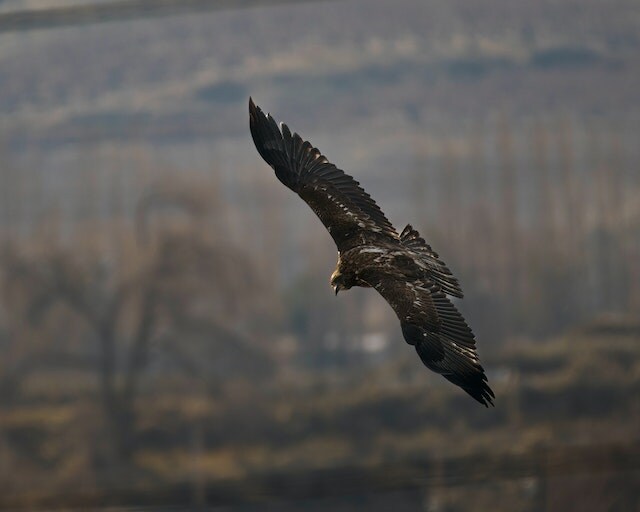
Conclusion
In conclusion, eagles have been observed hunting and consuming bats, although it is not a primary component of their diet.
Eagles are known for their impressive hunting techniques, including soaring high in the sky and diving down to catch their prey.
Bats, on the other hand, are nocturnal animals that play a crucial role in ecosystems as pollinators and insect controllers.
While it may seem surprising that eagles would target bats, there are potential reasons for these interactions.
One possibility is that bats provide an easily accessible food source for eagles during certain times of the year when other prey may be scarce.
Additionally, bats are agile flyers, making them a challenging target for eagles and potentially appealing as a hunting challenge.
One anticipated objection to the idea of eagles hunting bats is the fact that bats are typically associated with caves and other protected roosting sites.
However, it is important to note that eagles are skilled predators that can locate and capture bats even in these sheltered areas.
Their keen eyesight and powerful flight capabilities allow them to navigate and hunt in diverse environments.
Understanding the interactions between eagles and bats is crucial for the conservation and protection of both species.
Further research and observations on these interactions can provide valuable insights into the ecological dynamics and potential impacts on ecosystems.
By studying and conserving these fascinating creatures, we can ensure the preservation of biodiversity and maintain the delicate balance of our natural world.

